Vincent Wang
Design and Evaluation of a Compliant Quasi Direct Drive End-effector for Safe Robotic Ultrasound Imaging
Oct 04, 2024Abstract:Robot-assisted ultrasound scanning promises to advance autonomous and accessible medical imaging. However, ensuring patient safety and compliant human-robot interaction (HRI) during probe contact poses a significant challenge. Most existing systems either have high mechanical stiffness or are compliant but lack sufficient force and precision. This paper presents a novel single-degree-of-freedom end-effector for safe and accurate robotic ultrasound imaging, using a quasi-direct drive actuator to achieve both passive mechanical compliance and precise active force regulation, even during motion. The end-effector demonstrates an effective force control bandwidth of 100 Hz and can apply forces ranging from 2.5N to 15N. To validate the end-effector's performance, we developed a novel ex vivo actuating platform, enabling compliance testing of the end-effector on simulated abdominal breathing and sudden patient movements. Experiments demonstrate that the end-effector can maintain consistent probe contact during simulated respiratory motion at 2.5N, 5N, 10N, and 15N, with an average force tracking RMS error of 0.83N compared to 4.70N on a UR3e robot arm using conventional force control. This system represents the first compliant ultrasound end-effector tested on a tissue platform simulating dynamic movement. The proposed solution provides a novel approach for designing and evaluating compliant robotic ultrasound systems, advancing the path for more compliant and patient-friendly robotic ultrasound systems in clinical settings.
Forecasting SEP Events During Solar Cycles 23 and 24 Using Interpretable Machine Learning
Mar 04, 2024Abstract:Prediction of the Solar Energetic Particle (SEP) events garner increasing interest as space missions extend beyond Earth's protective magnetosphere. These events, which are, in most cases, products of magnetic reconnection-driven processes during solar flares or fast coronal-mass-ejection-driven shock waves, pose significant radiation hazards to aviation, space-based electronics, and particularly, space exploration. In this work, we utilize the recently developed dataset that combines the Solar Dynamics Observatory/Helioseismic and Magnetic Imager's (SDO/HMI) Space weather HMI Active Region Patches (SHARP) and the Solar and Heliospheric Observatory/Michelson Doppler Imager's (SoHO/MDI) Space Weather MDI Active Region Patches (SMARP). We employ a suite of machine learning strategies, including Support Vector Machines (SVM) and regression models, to evaluate the predictive potential of this new data product for a forecast of post-solar flare SEP events. Our study indicates that despite the augmented volume of data, the prediction accuracy reaches 0.7 +- 0.1, which aligns with but does not exceed these published benchmarks. A linear SVM model with training and testing configurations that mimic an operational setting (positive-negative imbalance) reveals a slight increase (+ 0.04 +- 0.05) in the accuracy of a 14-hour SEP forecast compared to previous studies. This outcome emphasizes the imperative for more sophisticated, physics-informed models to better understand the underlying processes leading to SEP events.
Zero-shot sampling of adversarial entities in biomedical question answering
Feb 16, 2024Abstract:The increasing depth of parametric domain knowledge in large language models (LLMs) is fueling their rapid deployment in real-world applications. In high-stakes and knowledge-intensive tasks, understanding model vulnerabilities is essential for quantifying the trustworthiness of model predictions and regulating their use. The recent discovery of named entities as adversarial examples in natural language processing tasks raises questions about their potential guises in other settings. Here, we propose a powerscaled distance-weighted sampling scheme in embedding space to discover diverse adversarial entities as distractors. We demonstrate its advantage over random sampling in adversarial question answering on biomedical topics. Our approach enables the exploration of different regions on the attack surface, which reveals two regimes of adversarial entities that markedly differ in their characteristics. Moreover, we show that the attacks successfully manipulate token-wise Shapley value explanations, which become deceptive in the adversarial setting. Our investigations illustrate the brittleness of domain knowledge in LLMs and reveal a shortcoming of standard evaluations for high-capacity models.
Evading Adversarial Example Detection Defenses with Orthogonal Projected Gradient Descent
Jun 28, 2021
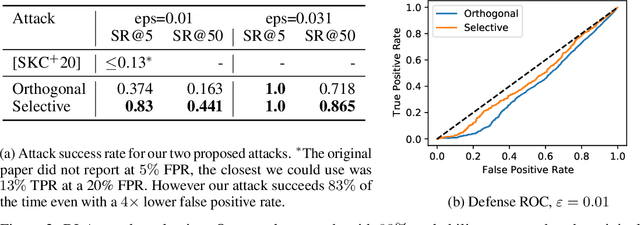
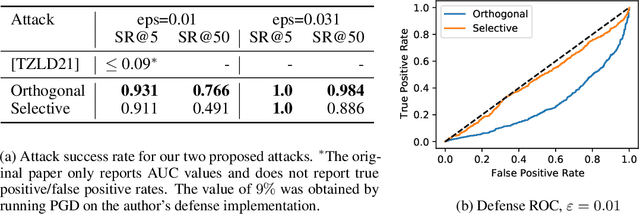
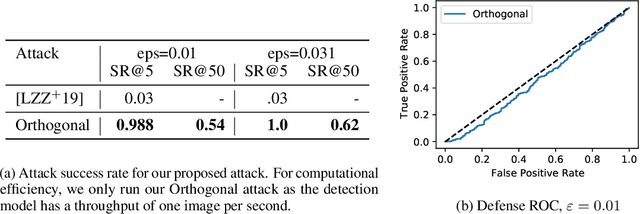
Abstract:Evading adversarial example detection defenses requires finding adversarial examples that must simultaneously (a) be misclassified by the model and (b) be detected as non-adversarial. We find that existing attacks that attempt to satisfy multiple simultaneous constraints often over-optimize against one constraint at the cost of satisfying another. We introduce Orthogonal Projected Gradient Descent, an improved attack technique to generate adversarial examples that avoids this problem by orthogonalizing the gradients when running standard gradient-based attacks. We use our technique to evade four state-of-the-art detection defenses, reducing their accuracy to 0% while maintaining a 0% detection rate.
Grammar Equations
Jun 14, 2021

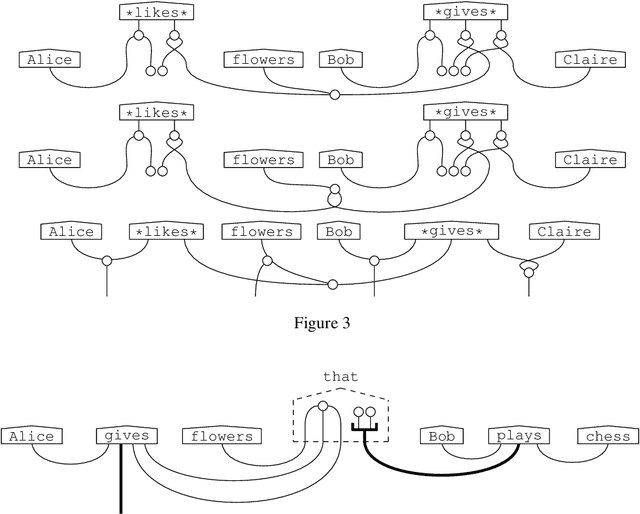
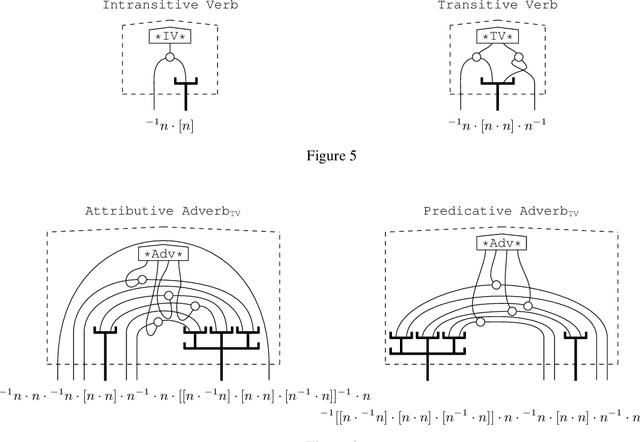
Abstract:Diagrammatically speaking, grammatical calculi such as pregroups provide wires between words in order to elucidate their interactions, and this enables one to verify grammatical correctness of phrases and sentences. In this paper we also provide wirings within words. This will enable us to identify grammatical constructs that we expect to be either equal or closely related. Hence, our work paves the way for a new theory of grammar, that provides novel `grammatical truths'. We give a nogo-theorem for the fact that our wirings for words make no sense for preordered monoids, the form which grammatical calculi usually take. Instead, they require diagrams -- or equivalently, (free) monoidal categories.
The Safari of Update Structures: Visiting the Lens and Quantum Enclosures
May 12, 2020Abstract:We build upon our recently introduced concept of an update structure to show that they are a generalisation of very-well-behaved lenses, that is, there is a bijection between a strict subset of update structures and vwb lenses in cartesian categories. We then begin to investigate the zoo of possible update structures. We show that update structures survive decoherence and are sufficiently general to capture quantum observables, pinpointing the additional assumptions required to make the two coincide. In doing so, we shift the focus from dagger-special commutative Frobenius algebras to interacting (co)magma (co)module pairs, showing that the algebraic properties of the (co)multiplication arise from the module-comodule interaction, rather than direct assumptions about the magma comagma pair. Thus this work is of foundational interest as update structures form a strictly more general class of algebraic objects, the taming of which promises to illuminate novel relationships between separately studied mathematical structures.
Categories of Semantic Concepts
Apr 22, 2020Abstract:Modelling concept representation is a foundational problem in the study of cognition and linguistics. This work builds on the confluence of conceptual tools from Gardenfors semantic spaces, categorical compositional linguistics, and applied category theory to present a domain-independent and categorial formalism of 'concept'.
 Add to Chrome
Add to Chrome Add to Firefox
Add to Firefox Add to Edge
Add to Edge